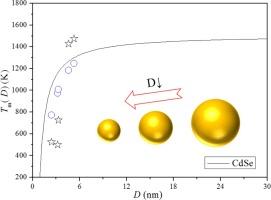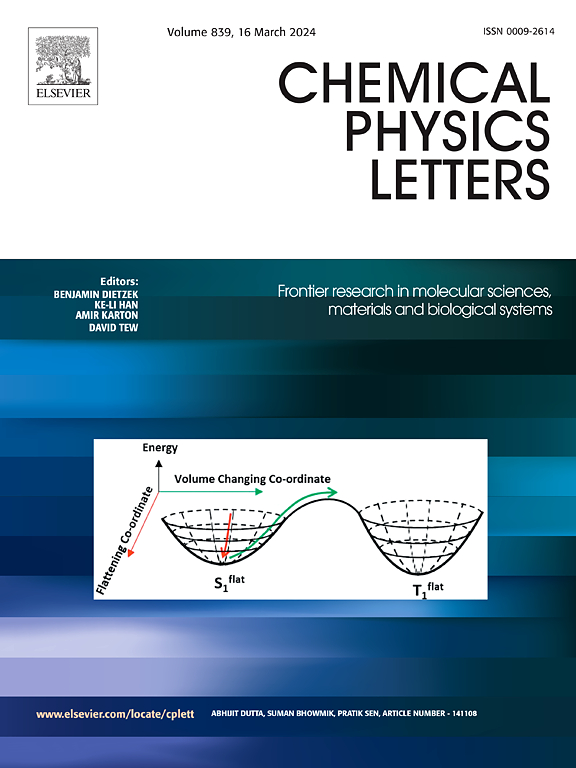半导体纳米晶体熔化温度建模
IF 2.8
3区 化学
Q3 CHEMISTRY, PHYSICAL
引用次数: 0
摘要
探索纳米尺度半导体晶体的热稳定性对现代量子器件的设计、制造和应用具有重要意义。本文提出了一个预测半导体纳米晶体熔化温度的热力学模型,该模型与 Si、Bi、CdS 和 CdSe 的实验结果非常吻合。此外,当尺寸减小时,熔化温度曲线的下降趋于与尺寸相关的固/液界面能和表面应力比γsl(D)/f(D)同步,这揭示了半导体纳米晶体熔化温度下降的物理根源。本文章由计算机程序翻译,如有差异,请以英文原文为准。

Modeling the melting temperature of semiconductor nanocrystals
Exploring the thermal stability of semiconductor crystals at the nanoscale is of great significance for the design, fabrication, and application of modern quantum devices. In this paper, we propose a thermodynamic model to predict the melting temperature of semiconductor nanocrystals, which is in good agreement with the experimental results of Si, Bi, CdS, and CdSe. In addition, when the size decreases, the drop of melting temperature curves tends to be synchronized with the size-dependent solid/liquid interface energy and surface stress ratio γsl(D)/f(D), which reveals the physical origin of the decrease in the melting temperature of the semiconductor nanocrystals.
求助全文
通过发布文献求助,成功后即可免费获取论文全文。
去求助
来源期刊

Chemical Physics Letters
化学-物理:原子、分子和化学物理
CiteScore
5.70
自引率
3.60%
发文量
798
审稿时长
33 days
期刊介绍:
Chemical Physics Letters has an open access mirror journal, Chemical Physics Letters: X, sharing the same aims and scope, editorial team, submission system and rigorous peer review.
Chemical Physics Letters publishes brief reports on molecules, interfaces, condensed phases, nanomaterials and nanostructures, polymers, biomolecular systems, and energy conversion and storage.
Criteria for publication are quality, urgency and impact. Further, experimental results reported in the journal have direct relevance for theory, and theoretical developments or non-routine computations relate directly to experiment. Manuscripts must satisfy these criteria and should not be minor extensions of previous work.
 求助内容:
求助内容: 应助结果提醒方式:
应助结果提醒方式:


